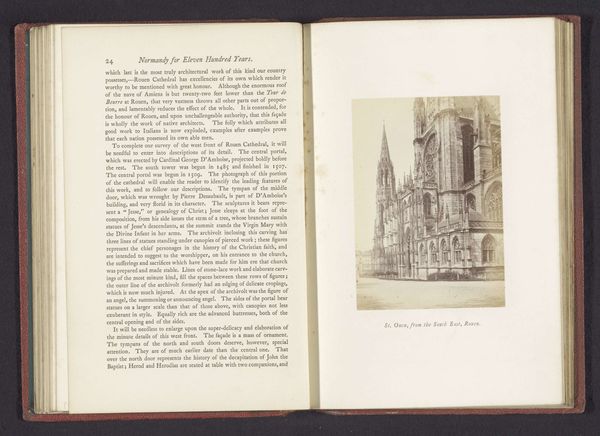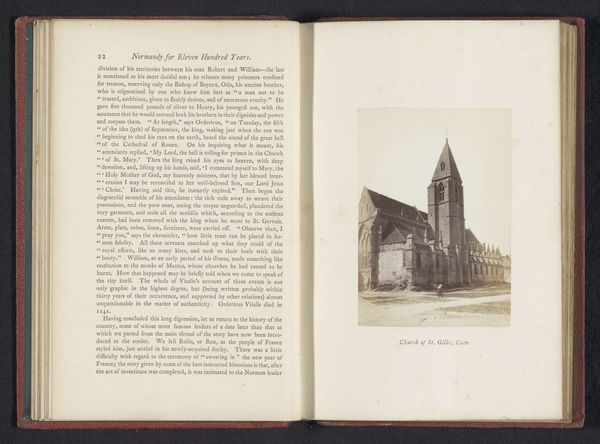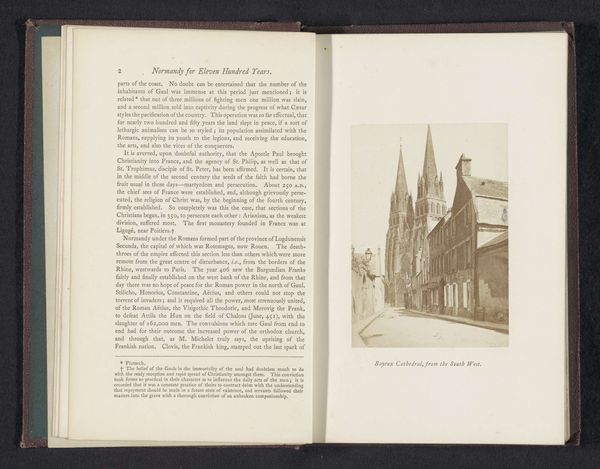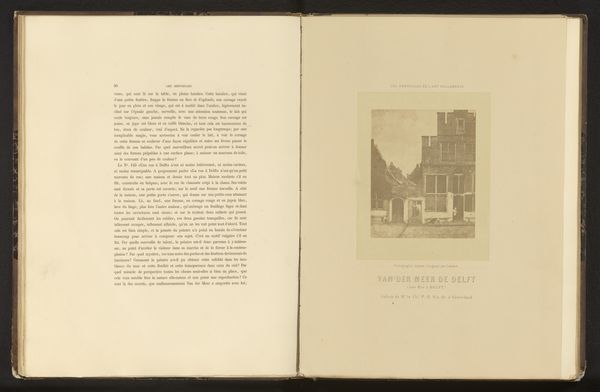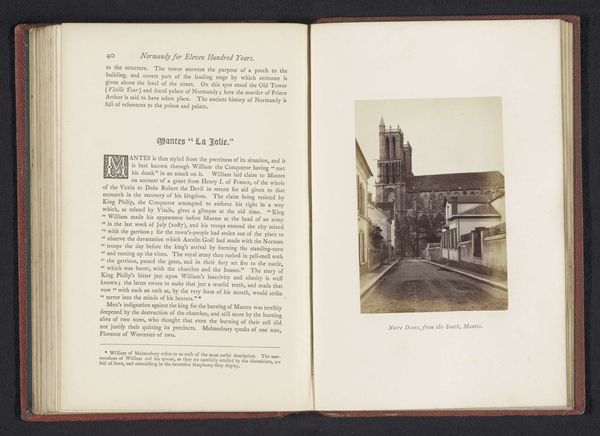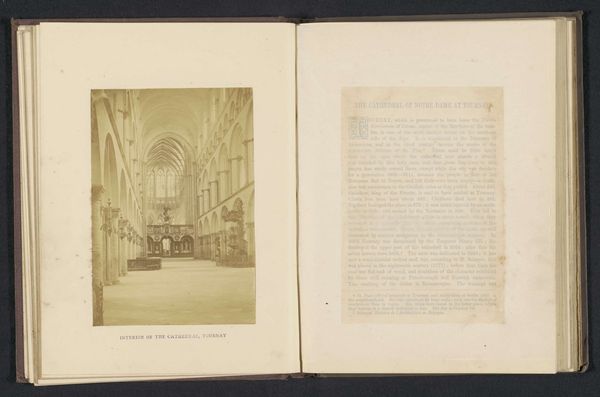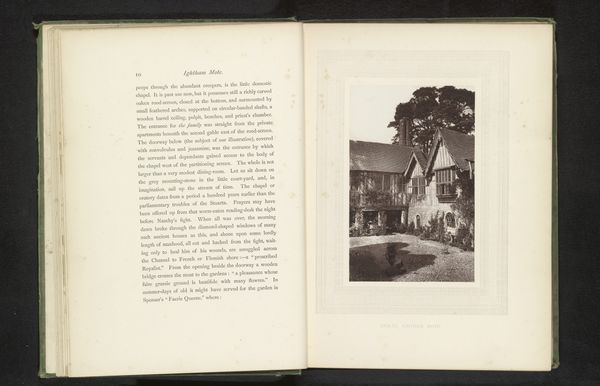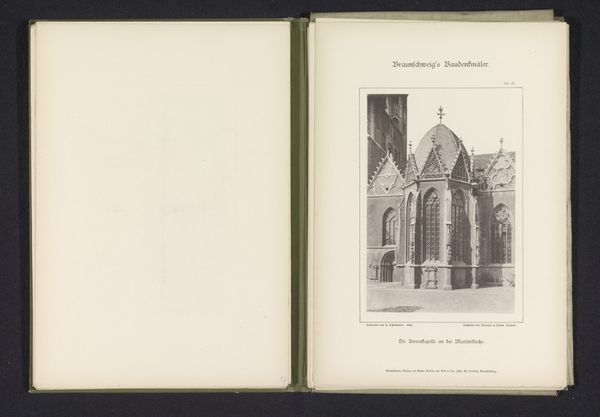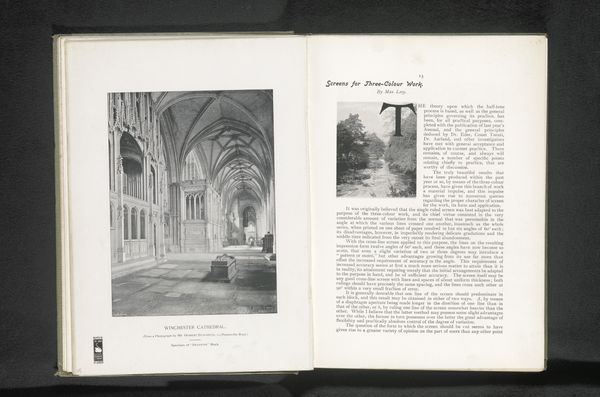
print, photography, architecture
# print
#
landscape
#
photography
#
romanesque
#
cityscape
#
architecture
#
building
Dimensions: height 114 mm, width 80 mm
Copyright: Rijks Museum: Open Domain
Curator: This is a photograph titled "Church of St. Pierre, south porch, Caen," taken sometime before 1865 by Joseph Cundall. It’s a stunning architectural study. Editor: It certainly is imposing! I'm struck by the detail; you can almost feel the chill of the stone. Curator: Cundall likely employed a technique like calotype or albumen printing here. He's really showcasing the interplay of light and shadow on the building's façade, emphasizing its materiality. This era saw a fascination with documenting historical structures. Think about the process, though – lugging that equipment, meticulously preparing the plates… photography then was an intensive labor. Editor: Absolutely, and seeing it reproduced here, as an element *within* a book, further contextualizes that labour. I find myself contemplating the socio-political weight such structures carried and continue to project, particularly within a city like Caen, given its contested history. It stands both as a religious site and a powerful assertion of cultural presence. The visible wear and tear whisper stories of resilience. Curator: Precisely! The architecture itself is fascinating, showcasing Romanesque and Gothic influences—notice the pointed arches and intricate carvings. Cundall’s captured more than just an image; he’s immortalizing the craftsmanship and the sheer human effort involved in constructing this massive edifice, one stone at a time. Editor: Right, but who decided what got immortalized? Who had the agency? This isn't just a passive rendering, is it? Consider Cundall's intentions as a Victorian photographer, maybe motivated to depict something of aesthetic and moral significance during a time of intense social and economic change. This view, framed from below, emphasizes not merely its architectural qualities but its dominance over the surrounding world, speaking about established hierarchies. Curator: True, Cundall's position shaped the view. But seeing that level of workmanship recorded and shared offers us today invaluable insight into the skillsets, the sheer availability of time, wealth, and labor deployed in the production of that architecture, not just for the commissioners of buildings like that church, but the armies of stonecutters, glaziers, builders, who might have worked in relative anonymity to erect it. Editor: Indeed, looking closely unveils an intricate web of human stories embedded in this enduring structure. The politics inscribed into its existence can remind us to examine what cultural ideals or aspirations shaped the place in history and still continue in effect nowadays. Curator: Ultimately, the photograph captures not just the south porch of the Church of St. Pierre, but a testament to time, labor, and the enduring human impulse to create something awe-inspiring. Editor: It pushes me to ponder not only about human accomplishment, but equally about the socio-economic forces shaping such displays of creative vision.
Comments
No comments
Be the first to comment and join the conversation on the ultimate creative platform.

